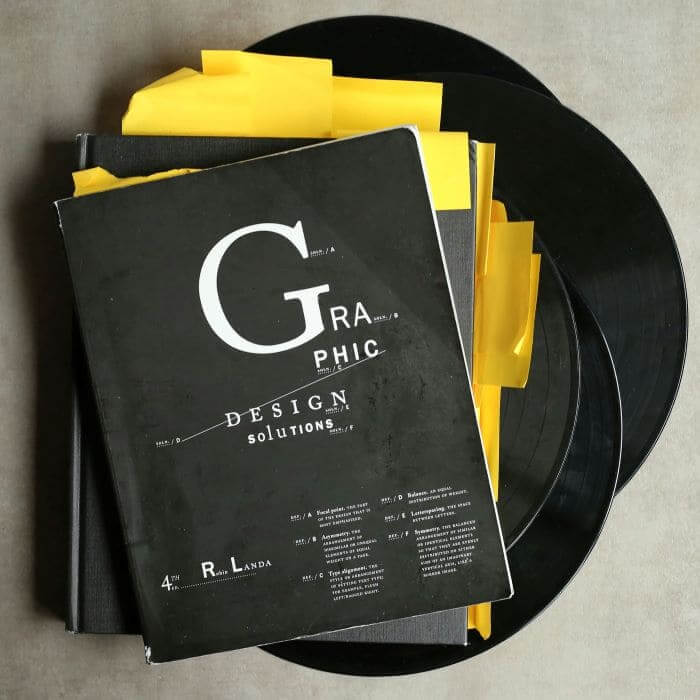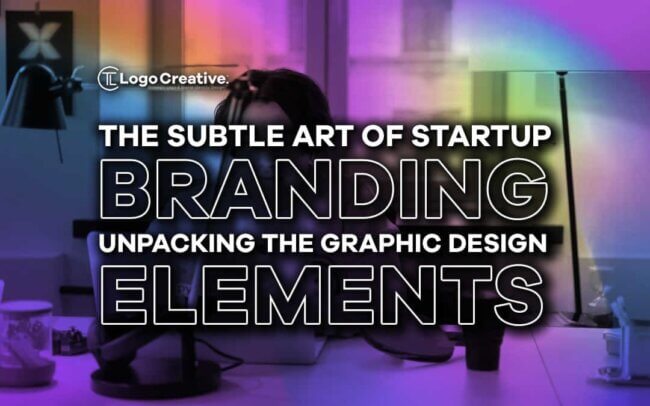In the competitive arena of start-up’s, branding emerges as a pivotal element that can significantly influence a venture’s success. Let’s dive in a discuss The Subtle Art of Startup Branding: Unpacking the Graphics Design Element
Effective branding goes beyond a mere logo or company name; it encompasses the entire essence of a start-up, shaping perceptions and building an emotional connection with the target audience.
At the heart of this branding strategy lies graphic design—a powerful tool that crafts the visual narrative of a brand, making it memorable and distinguishable in a crowded market.
Graphic design in branding is not just about aesthetics; it’s about communication. Through the strategic use of colours, typography, imagery, and layout, graphic design translates a start up’s vision, values, and personality into a visual language that speaks directly to the hearts and minds of potential customers.
This visual identity becomes the foundation upon which trust and loyalty are built, distinguishing a start-up from its competitors and paving the way for long-term success.
Table of Contents
The Essence of Startup Branding
Startup branding is the process of creating a unique identity and position for a new business in the marketplace. It’s about defining who you are as a company, what you stand for, and how you communicate your message to the world.
Branding is significant for start-ups as it not only attracts attention in the early stages of business development but also fosters a sense of loyalty and belonging among customers, ultimately contributing to customer retention and business growth.
Graphic design plays a crucial role in start-up success by visually conveying the brand’s message. It’s the first touchpoint for most potential customers, whether through a website, business card, or social media post.
Well-designed branding elements make a start-up look professional, credible, and appealing, which is essential for gaining trust and encouraging engagement from the target audience.
Graphic Design Elements in Startup Branding

Logo Design: The Cornerstone of Visual Identity
A logo design is often the first visual component that comes to mind when thinking about a brand. It serves as the face of the company, encapsulating its essence in a simple, recognizable mark. A well-designed logo is memorable, scalable, and reflective of the start-up’s vision and values, creating a lasting impression on the audience.
Colour Scheme: Conveying Brand Personality and Values

Colours carry psychological weight and can evoke specific emotions and behaviours. Choosing the right colour scheme for a start-up’s branding can significantly impact how the brand is perceived.
For instance, blue can evoke feelings of trust and security, while green is often associated with growth and health. The strategic use of colour can reinforce a brand’s personality and values, creating a visual identity that resonates with the target audience.
Typography: The Subtle Messenger of Brand Tone

Typography, the art of arranging type, influences the readability, perception, and overall aesthetic of branding materials.
The choice of font and typeface plays a crucial role in conveying the brand’s tone and personality: a modern, sans-serif font may convey a sense of innovation and forward-thinking, while a classic serif font might be used to project tradition and reliability.
Imagery and Icons: Crafting a Visual Narrative
Images and icons are powerful tools in storytelling, capable of conveying complex messages quickly and effectively.
In start-up branding, custom imagery and icons can illustrate services, highlight features, or communicate brand values without the need for words.
This visual narrative engages audiences, helping to build a connection with the brand through relatable and meaningful graphics.
Each of these elements—logo design, colour scheme, typography, and imagery—works together to create a cohesive and compelling brand identity.
Through thoughtful and strategic design, start-ups can establish a strong visual presence, differentiate themselves from competitors, and build a foundation for lasting relationships with their audience.
Strategies for Effective Startup Branding Through Graphic Design
Effective start-up branding is not just about having a visually appealing design; it’s about communicating the right message to the right people in a consistent and memorable way. Here are some strategies for leveraging graphic design to create a strong brand identity:
Understanding the Target Audience
The first step in effective branding is understanding who you are trying to reach. This involves researching your target audience’s preferences, behaviours, and needs.
Graphic design can then be tailored to resonate with this audience, using visual elements that appeal to their tastes and values. For example, a brand targeting young professionals might opt for a sleek, minimalist design to reflect sophistication and efficiency.
Consistency Across All Platforms
Brand consistency across all platforms and touchpoints reinforces recognition and trust. This means using the same logo, colour scheme, typography, and design elements on your website, social media, packaging, and marketing materials.
Consistent branding not only enhances brand recall but also assures your audience of your professionalism and attention to detail.
The Balance Between Trendiness and Timelessness
While it’s important to stay relevant and contemporary, your brand identity should not be so trendy that it becomes outdated quickly.
Striking a balance between trendiness and timelessness ensures your brand remains fresh yet enduring. This involves adopting design trends that align with your brand’s core identity and values, rather than following every new fad indiscriminately.
Embracing Simplicity for Clarity and Impact
In a world cluttered with information and visuals, simplicity in design can be incredibly powerful. A clean, uncluttered design is easier to recognize and remember, making it more effective in conveying your brand’s message.
Simplicity also ensures that your branding remains flexible, easily adapting to various formats and contexts.
Leveraging Technology in Startup Branding
Introduction to Procreate as a Tool for startup Branding
Procreate is a powerful and versatile digital illustration app available for iPad, widely favoured by graphic designers and illustrators.
Its intuitive interface, combined with a vast array of brushes, tools, and features, makes it an excellent choice for creating professional-grade graphic design elements for startup branding, from logos to illustrations and beyond.
Brief Overview of Procreates Capabilities
Procreate offers a comprehensive suite of tools for digital artists, including:
- A vast library of customizable brushes.
- Advanced layering system for complex designs.
- The ability to create time-lapse videos of your artwork.
- Compatibility with styluses like the Apple Pencil, providing a natural drawing experience.
- Features like blending modes, gradients, and masks, allowing for sophisticated design techniques.
Best Procreate Tutorials for Startup Branding
Embarking on the journey of start-up branding, these top Procreate tutorials offer invaluable insights and techniques to craft a compelling visual identity that resonates with your audience.
- Procreate for Beginners: This tutorial is perfect for those new to Procreate, covering the basics of the interface, tools, and simple design projects.
- Creating a Logo in Procreate: Focused on logo design, this tutorial guides you through the process of conceptualizing and executing a logo from scratch.
- Mastering Typography in Procreate: A deep dive into using typography effectively in your designs, including selecting and customizing fonts.
Challenges and Considerations
As start-ups venture into the realm of branding through graphic design, several challenges and ethical considerations emerge that can significantly impact their journey. Navigating these intricacies is crucial for establishing a brand that is not only visually appealing but also responsible and sustainable.
Common Pitfalls in Startup Branding
One of the primary challenges in start-up branding is the temptation to mimic successful competitors. While inspiration is natural, losing your unique identity in the process can dilute your brand and confuse your audience.
Another common pitfall is inconsistency, where start-ups fail to maintain a cohesive visual and communicative strategy across different platforms, leading to a disjointed brand image.
Overcomplicating design elements can also detract from the brand’s message, making it harder for the audience to understand what the start-up stands for. Simplicity, clarity, and focus should be the guiding principles in start-up branding efforts.
Ethical Considerations in Graphic Design
Ethical considerations in graphic design encompass a range of issues, from respecting copyright and intellectual property laws to ensuring inclusivity and diversity in visual representations.
Start-ups must be mindful of the cultural sensitivities and the potential impact of their design choices on various groups.
Sustainability is another crucial aspect, with start-ups increasingly expected to demonstrate environmental responsibility in their branding materials, opting for eco-friendly design solutions and practices.
Endnote
Understanding the target audience, maintaining consistency across platforms, striking a balance between trendiness and timelessness, and embracing simplicity are foundational strategies for effective branding.
However, the journey of start-up branding is fraught with challenges, from avoiding common pitfalls to adhering to ethical standards in design. These considerations underscore the importance of a thoughtful and responsible approach to branding.
Join The Logo Community
We hope you have enjoyed this article. If you would like more personal tips, advice, insights, and access to our community threads and other goodies, join me in our community. You can comment directly on posts and have a discussion.
*TIP – We use and recommend DesignCuts for all your fonts, mockups and design bundles.



